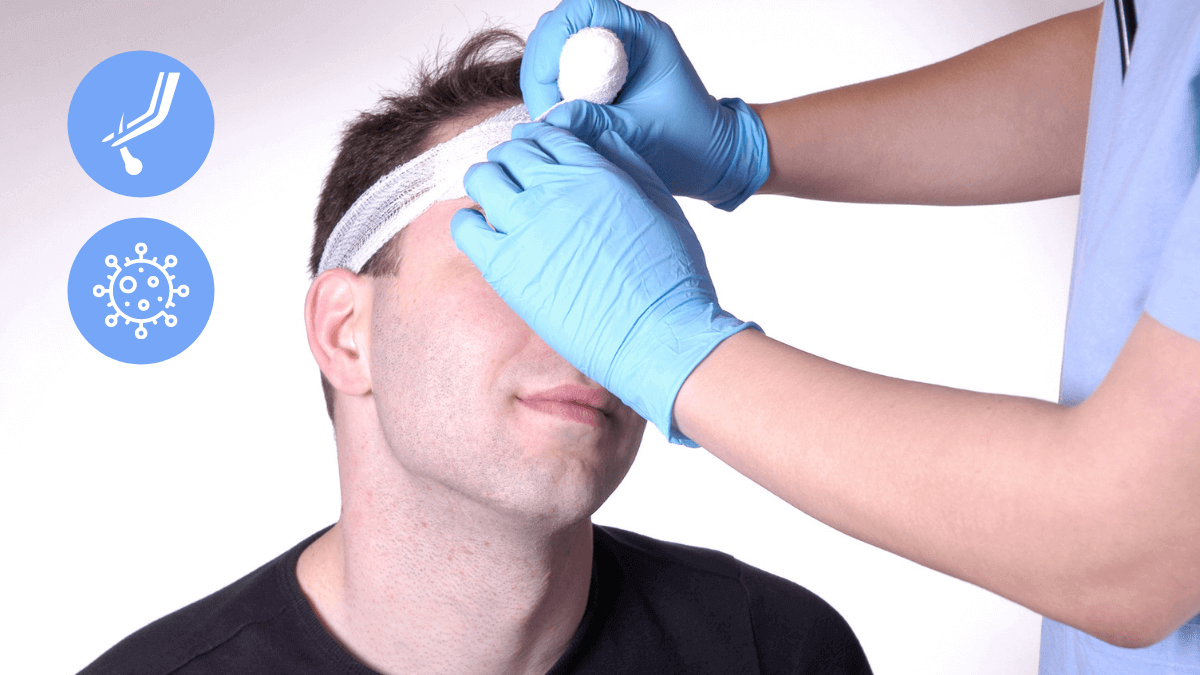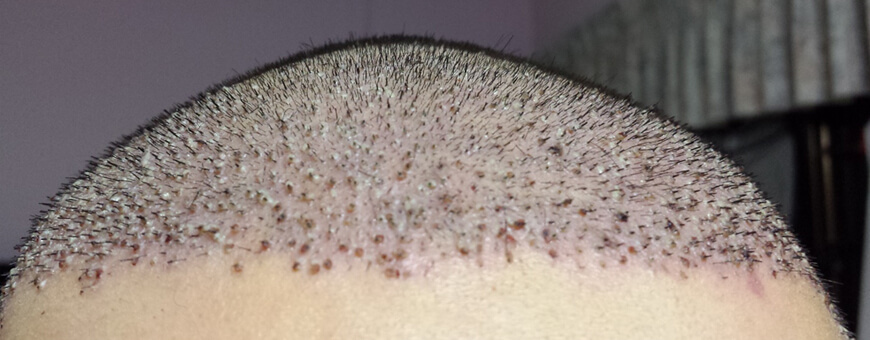TL;DR
➡ Almost every hair transplant is likely to cause minimal infections and risks. Mostly, despite their low rate, they are experienced post-surgery.
➡ Mostly, these infections become apparent with symptoms 3-7 days following the operation, such as bleeding, itchiness, and swelling.
➡ Including more dangerous risks, they appear solely due to unsanitary conditions during surgery.
➡ Ultimately, the safest decision is to advise an experienced doctor, as solutions such as antibiotics should also be taken with a prescription after consulting with your doctor.
Infections following a hair transplant surgery are pretty uncommon.
But still possible.
That’s why many hair loss patients doubt undergoing hair restoration surgery and want to learn more about the risks involved.
In this article, I will answer every question you might have about hair transplant infections:
Table of Contents
Let’s answer the primary question first:
Can a Hair Transplant Get Infected?
Yes, a hair transplant can get infected. Whether it is because of an unsanitary hair transplant procedure or complications that develop following a hair transplant surgery, it is possible for your scalp to get infected post-op.
But, according to a study, less than 1% of hair transplant patients develop infections after the surgery.
Even though this is a relieving hair transplant statistic for many patients, some still worry.
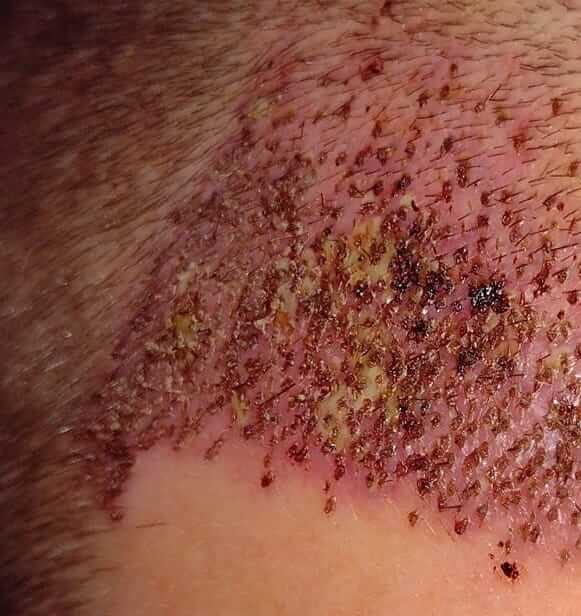
Should you be worried?
Developing infections after an operation is a possible risk of every medical surgery.
Thanks to Alexander Fleming, who discovered penicillin and kickstarted the use of antibiotics in medicine, infections are not as vital as they used to be; they can easily be treated with an early diagnosis and prescribed consumption of antibiotics.
And the risks are even lower with cosmetic surgeries such as hair transplantation since the operation is not performed directly on or even remotely around a vital organ.
So, to answer the important question; your chances of having your hair transplant infected are extremely low and the treatment is relatively simple and easy.
Hair Transplant Infection Symptoms
Understanding whether or not you’re developing an infection due to a hair transplant surgery, which generally happens 3-7 days following the operation, can be tricky.
After hair transplantation, during the initial recovery process which includes the first week to 10 days, many symptoms and side effects that are similar to those of infection are expected.
Here are the symptoms you should look out for:
Localized Symptoms
- Excessive Redness and/or Discoloration
- Swelling
- Pus-like Drainage
- Red Streaks Around the Scalp
- Discomfort and Pain
- Burning Sensation
- Bleeding
- Itchiness
Most of these symptoms are expected to be present during the first 7 to 10 days after the operation, so it can be difficult to understand if you’ve developed an infection or if you’re going through the recovery process expectedly.
You can also evaluate yourself for systemic symptoms that usually develop due to infections:
Systemic Symptoms
- Fever
- Chills and Sweats
- Burning or Pain with Urination
- Nausea
- Vomiting
- State of Lethargy
The safest way to make sure is consulting your physician or going in for an examination when you believe you have the symptoms. So, if the symptoms persist, see your dermatologist.
What Causes a Hair Transplant Infection?
An infection occurs when viruses, bacteria, or other microbes enter your body whether it is through bodily systems or open wounds, and starts to multiply.
Developing infections following surgery was much more common just a few decades ago, due to physicians not knowing the science behind or following sanitary practices.
Since the integrity of your skin is exposed during a hair transplant surgery both in recipient and donor areas, even if it is in tiny areas, your scalp becomes susceptible to bacteria. So, the short answer to the question “What causes hair transplant infections?” is unsanitary conditions and practices.
But it’s always good to repeat what these might be, so starting from the day of the surgery:
Unsanitary Clinics and/or Surgery Conditions
The majority of hair transplant infections are caused by unsanitary conditions during surgery, there’s no getting around that.
An unsanitary clinic is the last thing you expect when you are going for cosmetic surgery that you’ll pay for it yourself waiting to get top care, but it happens and it happens too often.
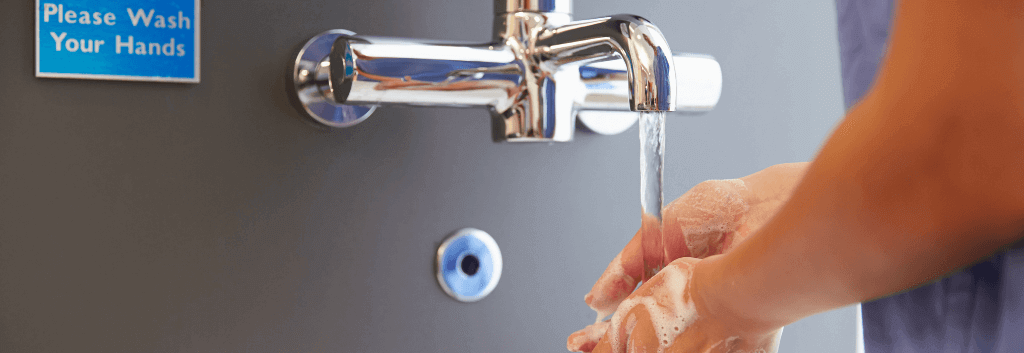
As a dermatologist surgeon, I’ve seen many clinics and hair transplant surgeons that cared more for time and money than the health of the patient and ignored hygienic regulations and practices.
Lack of hygiene and sanitization in the clinic you’re going to have your surgery leaves you vulnerable to infections.
Scratching Crust and Scabs
Once you’re done with the surgery and out of the clinic, it’s your responsibility to keep your scalp clean and away from anything that might cause an infection.
And following the surgery, during the recovery process, hair transplant scabs will form both on donor and recipient areas. These areas will get extremely itchy, and you will want to scratch them.
But under no condition should you do that, because it can harm your newly planted hair follicles and expose your scalp to bacteria and germs that are on your hand.
Sweating
I suggest my patients work out after getting their hair transplant to improve blood circulation, but getting into activities that cause excessive sweating can be risky.
Although sweat doesn’t directly cause bacterial infections, it can make your scalp unsanitary. When you combine warmth and moistness caused by sweat with unhygienic conditions, the chances of getting an infection can increase dramatically.
Being Exposed to Pollution
Your scalp doesn’t stay covered up during the recovery period, so it is exposed to the conditions of the environment you are in.
If you are in a polluted, dusty, and unsanitary environment, you’ll be much more likely to develop an infection.

The same goes with swimming, especially in the sea. Seawater hosts countless germs, viruses, and bacteria; and unlike pools, nobody sanitizes the sea.
Hair Transplant Infection Risks
If diagnosed and treated early, an infection in your scalp won’t have lasting or serious effects.
But, if it is treated poorly or allowed to progress, there might be complications that can adversely affect your hair transplant results or your overall health.
Starting with the risks that are more likely to happen:
Poor Hair Transplant Results
Infection in the recipient area of your scalp can cause your newly transplanted hair follicles to scar and fall out.
Especially considering the success of your hair transplant depends on the follicles that survive after a longer period of time, losing grafts and having scars replace them will negatively affect your results. If not treated properly, an infection on the recipient area can result in the majority of follicles falling out and patchy hair growth around scars.
Further Complications
An infection doesn’t go away by itself.
The longer it is left untreated, the worse the systemic symptoms will get, and it will spread deeper into your tissues and bones, causing various diseases that can threaten your life.
According to research, the most common of these diseases is septicemia, also known as blood poisoning or toxemia. This vital condition can go as far as causing organ failures.
Treatment of a Hair Transplant Infection
The first step to treating infection in your recipient or donor area after a hair transplant is certainly diagnosis. So, it is crucial for you to meet with your physician as soon as you are showing signs of infection.
If the diagnosis was made early and the infection is at a non-critical stage, appropriate topical or oral antibiotics are prescribed for treatment after sensitivity testing.
Important
It is unsafe to take antibiotics without prescription, so if you think you’ve developed an infection consult your physician before starting antibiotics.
5 Steps Avoiding Hair Transplant Infections
If you haven’t had your hair transplant surgery yet, and wondering if there’s anything you can do to prevent an infection from happening; I’ll give you three steps you need to follow strictly.
1- Undergo surgery in an expert clinic that prioritizes health 🏥
While picking a clinic to have your hair restoration surgery in, you need to make sure the staff and the physicians are adopting sanitary practices.
General hygiene is mostly insufficient for surgeries because there are strict rules and regulations to keep the room and the equipment sanitary to minimize the risk of infection or other complications. When choosing a clinic, make sure they are credible and professional by checking their licenses and certificates, verified patients, and online reviews/news articles.
2- Properly maintain post-operation care 🚿
It is essential to care for your scalp after a hair transplant the right way.
Your physician should provide you with all the details you need about post-operation care, and show you how to wash your hair during the initial recovery process. But the responsibility falls onto you since you are the only one who can closely monitor your day-to-day activities and medications.
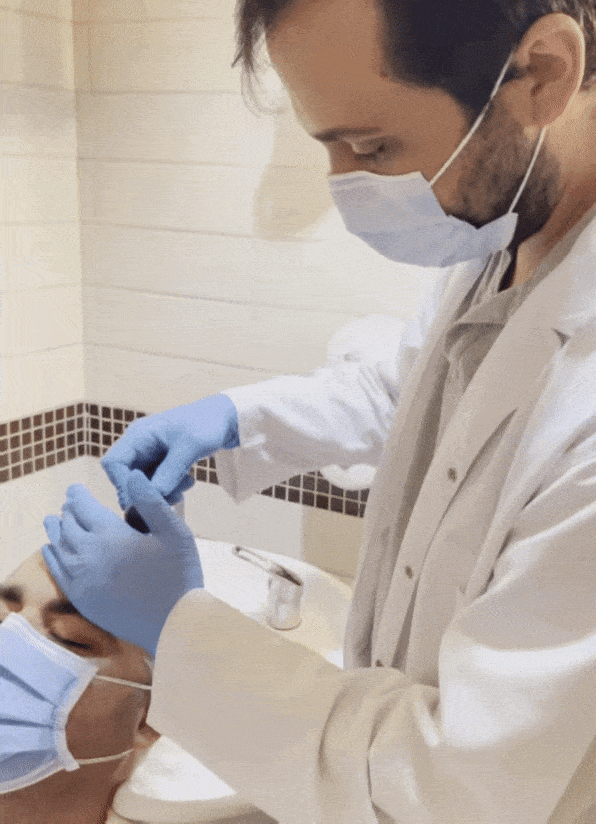
Try to regularly clean and sanitize your recipient and donor areas after the surgery.
3- Avoid sweating, swimming, and being in polluted areas ☢
In addition to regularly sanitizing your scalp, you are also supposed to avoid being in polluted/dusty areas, going swimming, and doing activities that will cause excessive sweating.
Make sure you’re keeping your scalp as clean as possible, especially for at least 30 days following the surgical procedure.
4- Don’t touch your scalp 🚫
The itching sensation can be overwhelming right after the operation or you might want to pick the scabs, but we advise patients not to touch their scalp under any condition.
Our bare hands are full of germs and bacteria and almost never sanitary, so it’s a sensible practice to keep them away from your hair during the healing process.
5- Go in for regular check-ups 🩺
The initial recovery period following the surgery is highly critical, so going in for regular checkups after your surgery, or even consulting your physician online makes sense.
And not only for minimizing the risk of infections, for the overall success of your hair transplant surgery, one of the most sensible things to do is to consult your physician if anything goes wrong.
Most Clinics Simply Don’t Care
It’s true.
Let alone caring for and prioritizing your health, most clinics employ inexperienced and inattentive physicians that will increase the risks of failure and infections.
It’s your responsibility, as the patient, to choose the right clinic with experienced staff, high standards, and preferably a dermatologist on-site; like UnitedCare.
At UnitedCare, we adopt the most advanced hair transplantation techniques with the best equipment and treat your hair loss with a holistic approach.

From the first examination to regular check-ups after the surgery, we prioritize your health and practice hair transplantation based on the years of experience of our dermatologist staff.
We’re just a click away: 👇
To avoid any side effects such as infections, picking the right clinic is the key.
You can get a free consultation from UnitedCare’s expert dermatologists right now:
Frequently Asked Questions (FAQs)
Can hair transplants cause infections?
Hair transplants aren’t a direct cause of infections, but as the integrity of your skin is exposed and you technically have thousands of open wounds on your scalp, any contact with germs and bacteria will cause infections.
Do you need antibiotics after hair transplant?
You don’t need antibiotics after getting a hair transplant unless you’ve developed an infection which is extremely unlikely. In any scenario, don’t take antibiotics without a prescription.
How do I know if my hair transplant is infected?
Discoloration and extreme redness around your scalp, itching or burning sensation alongside pain, and general fever and sweating are the main symptoms of hair transplant infections. You should watch for these symptoms and consult your physician immediately if they persist.
